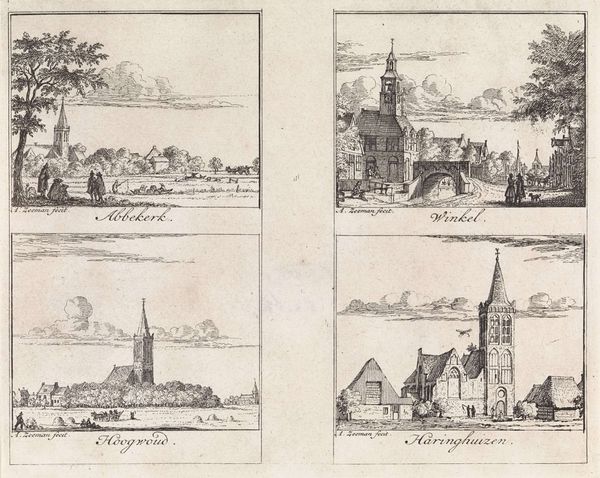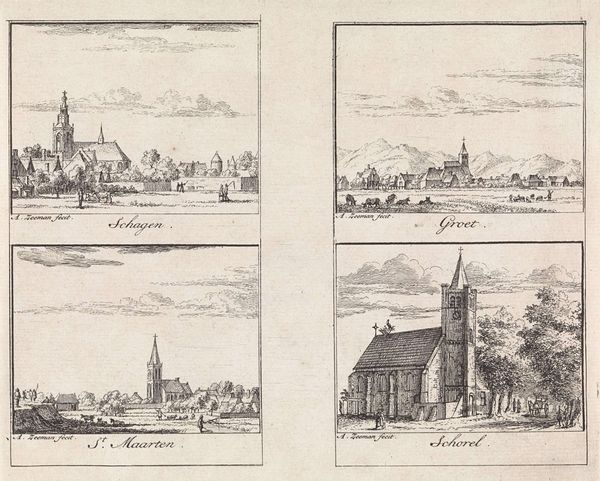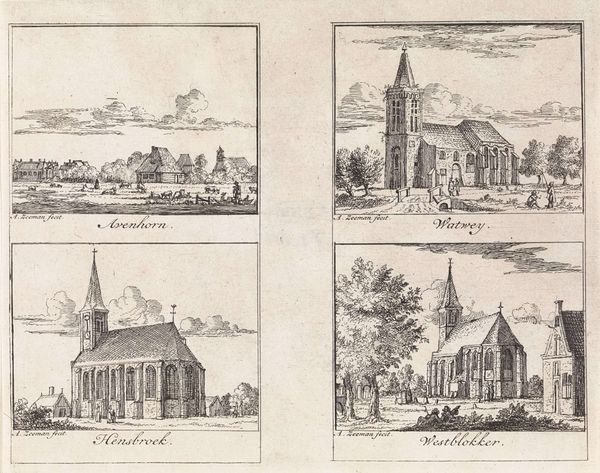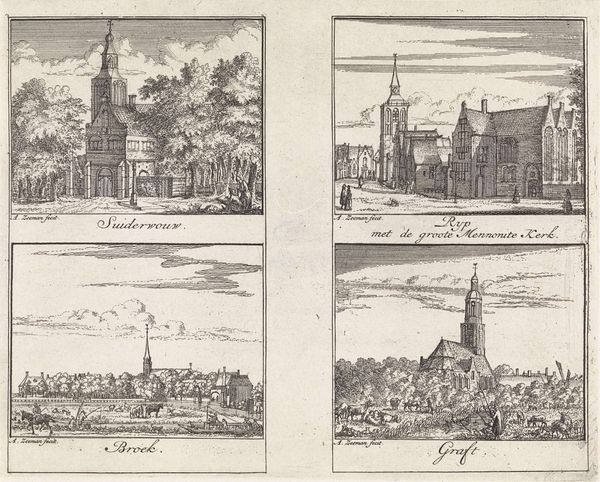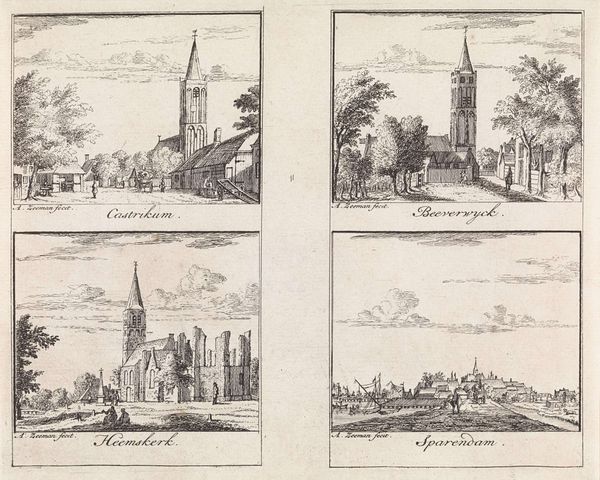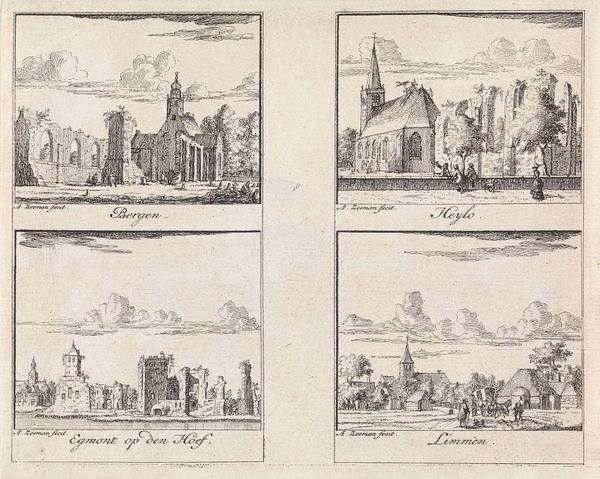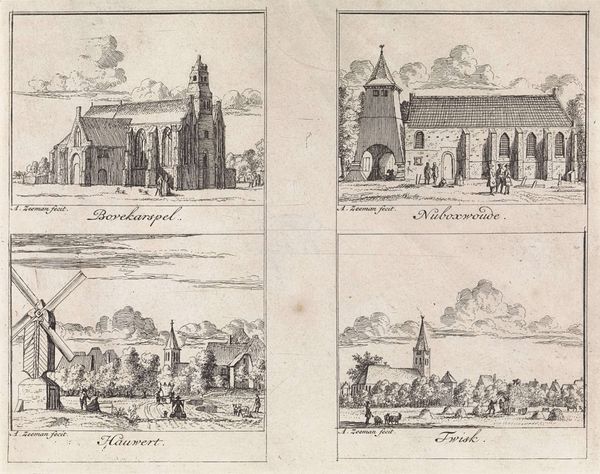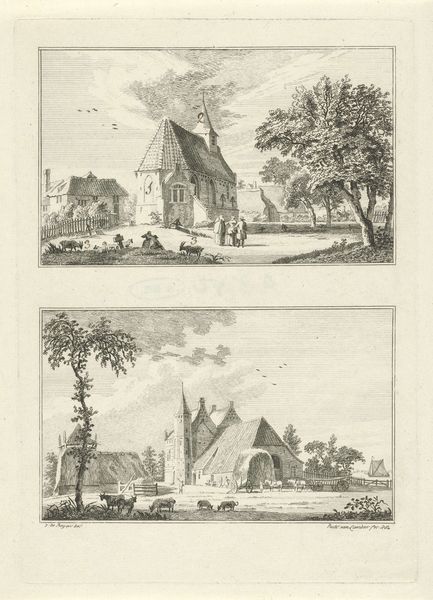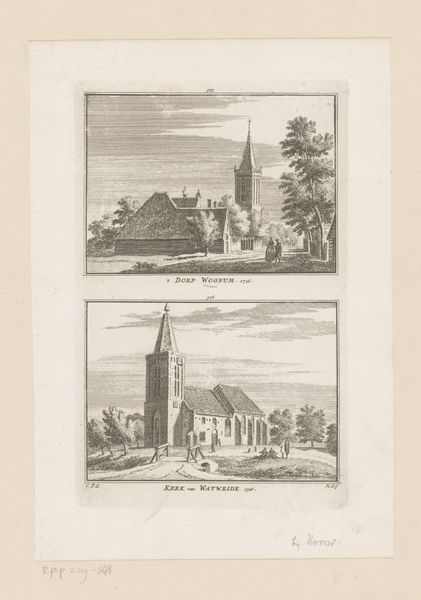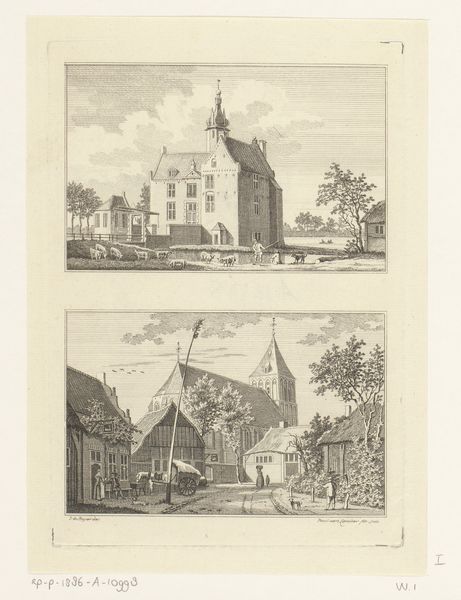
print, engraving
#
dutch-golden-age
# print
#
pen sketch
#
landscape
#
cityscape
#
engraving
Dimensions: height 146 mm, width 184 mm
Copyright: Rijks Museum: Open Domain
Editor: This is a 1732 engraving by Abraham Zeeman titled "Gezichten op Wijdenes, Westwoud, Hem en Grootebroek," which translates to "Views of Wijdenes, Westwoud, Hem and Grootebroek." It depicts four different townscapes within a single frame. They look so serene and quaint. How do you interpret this work? Curator: It is tempting to view these prints as merely quaint depictions of 18th-century Dutch towns. However, I think it's crucial to situate them within the larger historical context of the Dutch Golden Age, a period marked by unprecedented economic prosperity and colonial expansion built, of course, on exploitation. Editor: I see, so the idyllic landscapes could mask a more complex reality. How so? Curator: Consider that the wealth which funded artistic endeavors and the construction of these towns was, in part, derived from the Dutch East India Company's activities. The "views" become complicit in promoting an idealized image of Dutch society. Does focusing on these picturesque qualities inadvertently obscure a less palatable reality? Editor: That's a sobering thought. These images seem like simple records, but you're suggesting they participate in a certain cultural narrative. What is the intention of Zeeman by depicting this “view”? Curator: Perhaps the intent was documentation. Perhaps the intention was about projecting stability and prosperity? And even that seemingly straightforward objective can be politically charged. How does the gaze of the artist shape our understanding and ultimately justify certain systems of power? These seemingly placid landscapes conceal complex, often troubling histories. Editor: That's a lot to think about. I definitely see this work differently now, knowing the potential subtext behind the artist's choices. Curator: Exactly. Art is never created in a vacuum. Considering its historical, social, and political implications encourages critical engagement and fosters a deeper comprehension of our present moment.
Comments
No comments
Be the first to comment and join the conversation on the ultimate creative platform.
